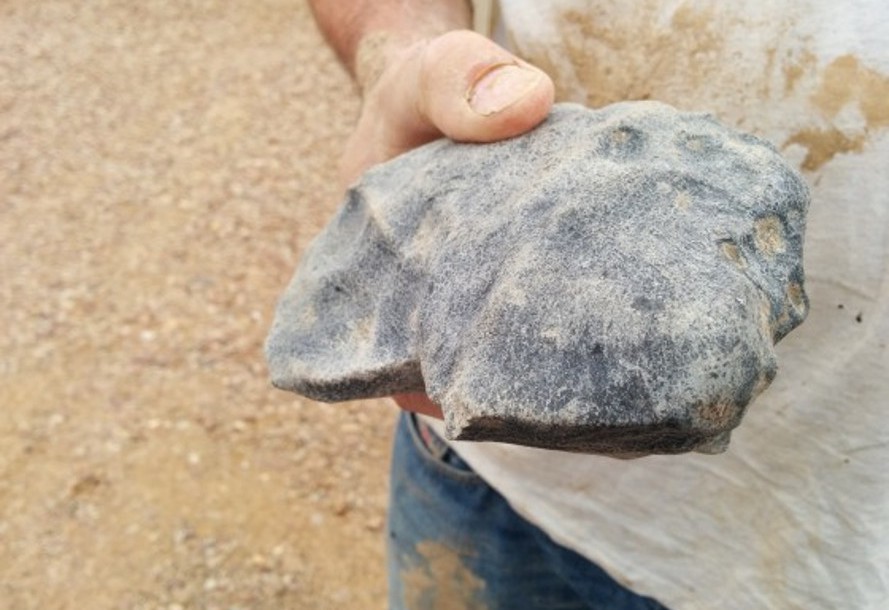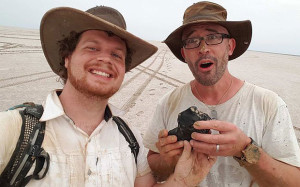
Geologists have discovered a meteorite fragment, estimated to be 4.5 billion years old, in the outback of Australia.
After a greenish fireball streaked above the Australian Outback in November, meteorite researchers went hunting for the space rock that had caused the cosmic display.

BYPASS THE CENSORS
Sign up to get unfiltered news delivered straight to your inbox.
You can unsubscribe any time. By subscribing you agree to our Terms of Use
Latest Video
The team of researchers from Curtin University managed to retrieve the old rock out of the salty mud near a remote lake bed in the desert… and just moments before heavy rains would have washed it away
Science Alert reports:
The recovery operation involved a network of 32 remote camera observatories, a mass of complicated geographical calculations, an aerial spotter, a remotely operated drone, two human searchers, and a whole lot of luck.
It all began on 27 November 2015, when the fragment was hurtled down to Earth’s surface from space. Locals in the William Creek and Marree areas of South Australia witnessed its descent, and it was also spotted by the Desert Fireball Network (DFN) – a series of linked digital cameras that monitor the skies above the outback and look for traces of incoming meteorites. Once the rock had been spotted, the race was on to find it.

After some image analysis, triangulation, and other calculations, the search began in earnest around the Kati Thanda-Lake Eyre area – the lowest natural point in Australia – on December 29. An unmanned drone and a manned light aircraft were used to guide DFN team members, Phil Bland and Robert Howie from Curtin University, to the correct spot, with the assistance of a local search party.
Three days into the search, they found it: a 1.7-kg (3.7-lb) rock embedded in thick salt lake mud, some 42 cm (16.5 inches) below the surface. If the researchers had been a few days later, heavy rains would’ve washed away the rock for good.
According to its discoverers, the meteorite fragment is a chondrite or stony meteorite that they estimate to be more than 4.5 billion years old – not a bad innings when you consider that Earth itself has been around for about that amount of time. “It was an amazing team effort – we got there by the skin of our teeth,” said Bland.
Not only is it an exciting geological discovery that should eventually teach us more about the origins of the Universe, it’s a huge boost for the founders of the Desert Fireball Network scheme. “This meteorite is of special significance as the camera observations used to calculate the fall positions have also enabled the solar system orbit of the meteorite to be calculated, giving important contextual information for future study,” added Bland. “It demonstrates beyond doubt that this giant machine that we’ve built really works.”
The researchers believe the rock came from somewhere between Mars and Jupiter, and now the serious work of studying the object can begin. “The fact we have managed to retrieve the meteorite at all is remarkable,” said Bland’s colleague, Jonathan Paxman. “Our people worked around the clock to reduce the data, enabling rapid recovery of something that would have been lost if we’d gotten there any later.”



